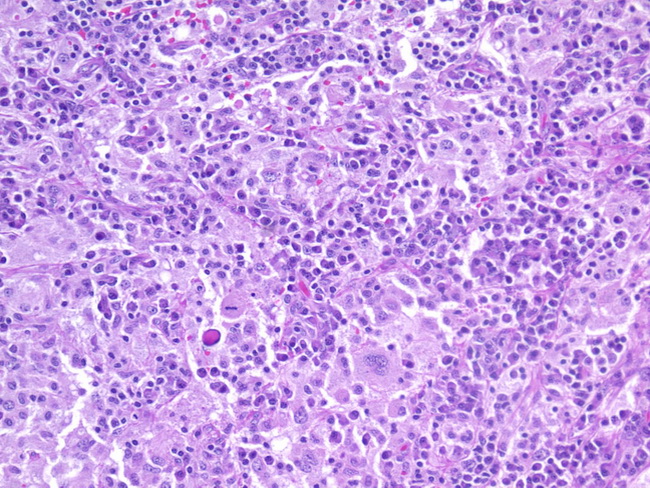Extranodal Rosai-Dorfman Disease : Orbit


Comments:
Rosai-Dorfman disease (RDD) of the orbit is rare (2.3% of all orbital lesions) and usually presents as a firm rubbery mass causing proptosis in young individuals. The median age at presentation is around 13 years. The lesions are bilateral in 57% of cases, associated with lymphadenopathy in 57% of cases, and show extranodal involvement in 43% of cases (see reference). The histologic features are similar to those seen in other sites, including proliferation of abnormal histiocytes showing emperipolesis, lymphoplasmacytic infiltrate, and background fibrosis. Orbital RDD can mimic lymphoma, lacrimal gland tumors, and other histiocytic proliferations (e.g. xanthogranuloma). The primary management of patients with a well-defined orbital mass is surgery. Those with diffuse involvement of the orbit can be managed by incisional biopsy followed by systemic corticosteroid therapy with good outcome. Reference: Vemuganti G. K., Naik M. N., & Honavar, S. G. Rosai-Dorfman disease of the orbit. J. Hematol Oncol. 2008; 1:7 This patient with Orbital Rosai-Dorfman disease presented with persistent blurry vision. The image shows aggregates of abnormal histiocytes associated with a dense lymphoplasmacytic infiltrate. Image courtesy of: Rob Hutton, MD, Beaumont, Texas, USA; used with permission.



